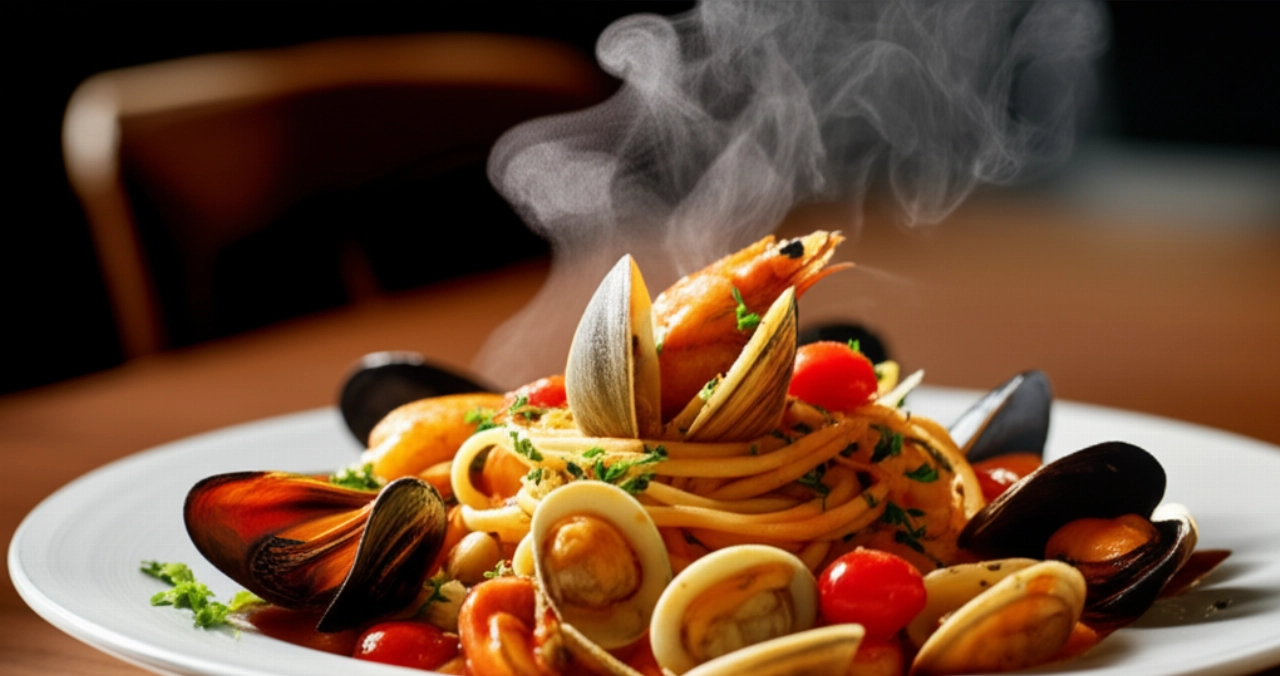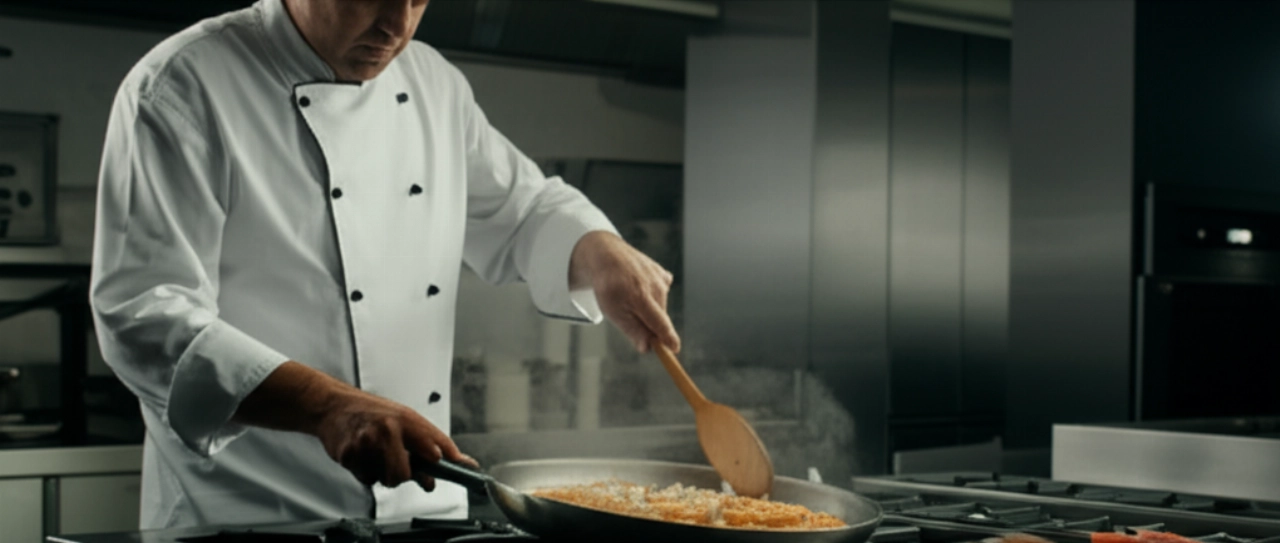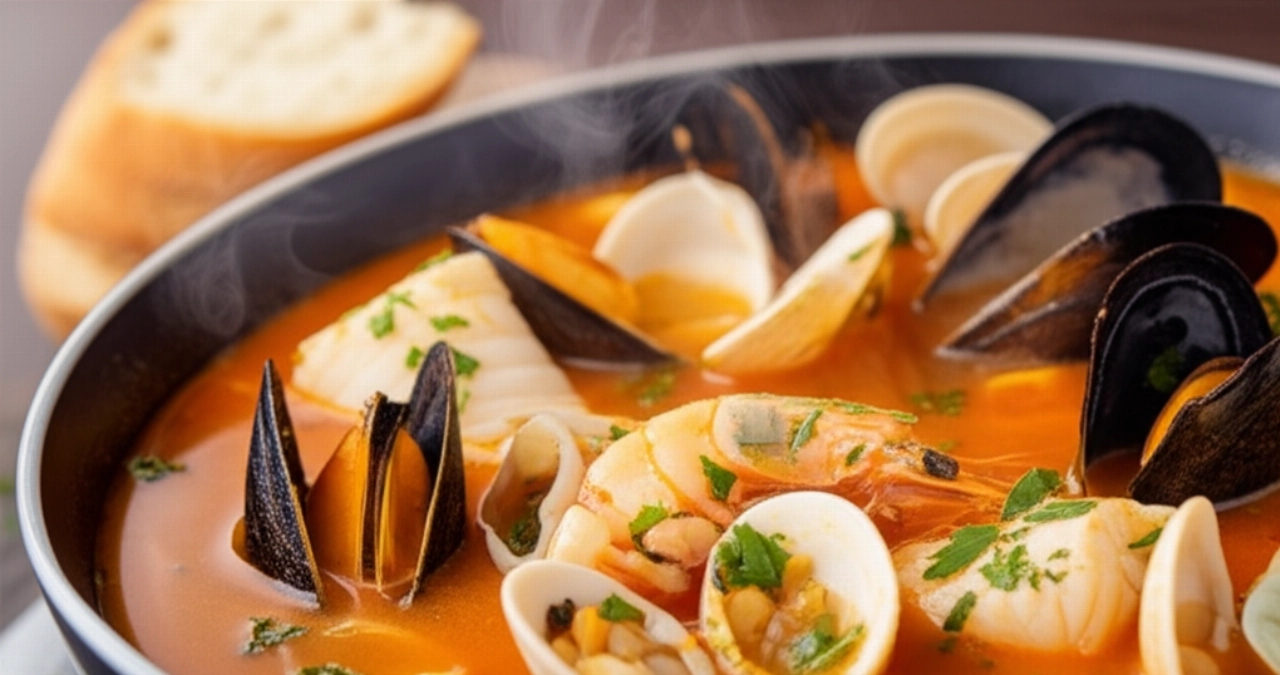There's a scent that immediately evokes summer, the sea breeze, and the joy of a family lunch: that of spaghetti with clams. Do you dream of bringing to the table a dish that tastes of the sea, with juicy clams and an enveloping sauce that makes you want to sop up every last drop?
But how many times have you found yourself with sand in your teeth, clams that won't open, or overcooked, tasteless pasta? Finding 'that true' recipe, one that guarantees success without anxiety, seems like a challenge.
Make yourself comfortable, because today I won't just give you a list of ingredients. I'll reveal all the secrets, grandma's tricks, and chef's tips to prepare the most delicious and authentic Spaghetti with Clams you've ever tasted. Forget the fear of making mistakes: with this guide, success is guaranteed, and the pure taste of the sea will be the star of your table.
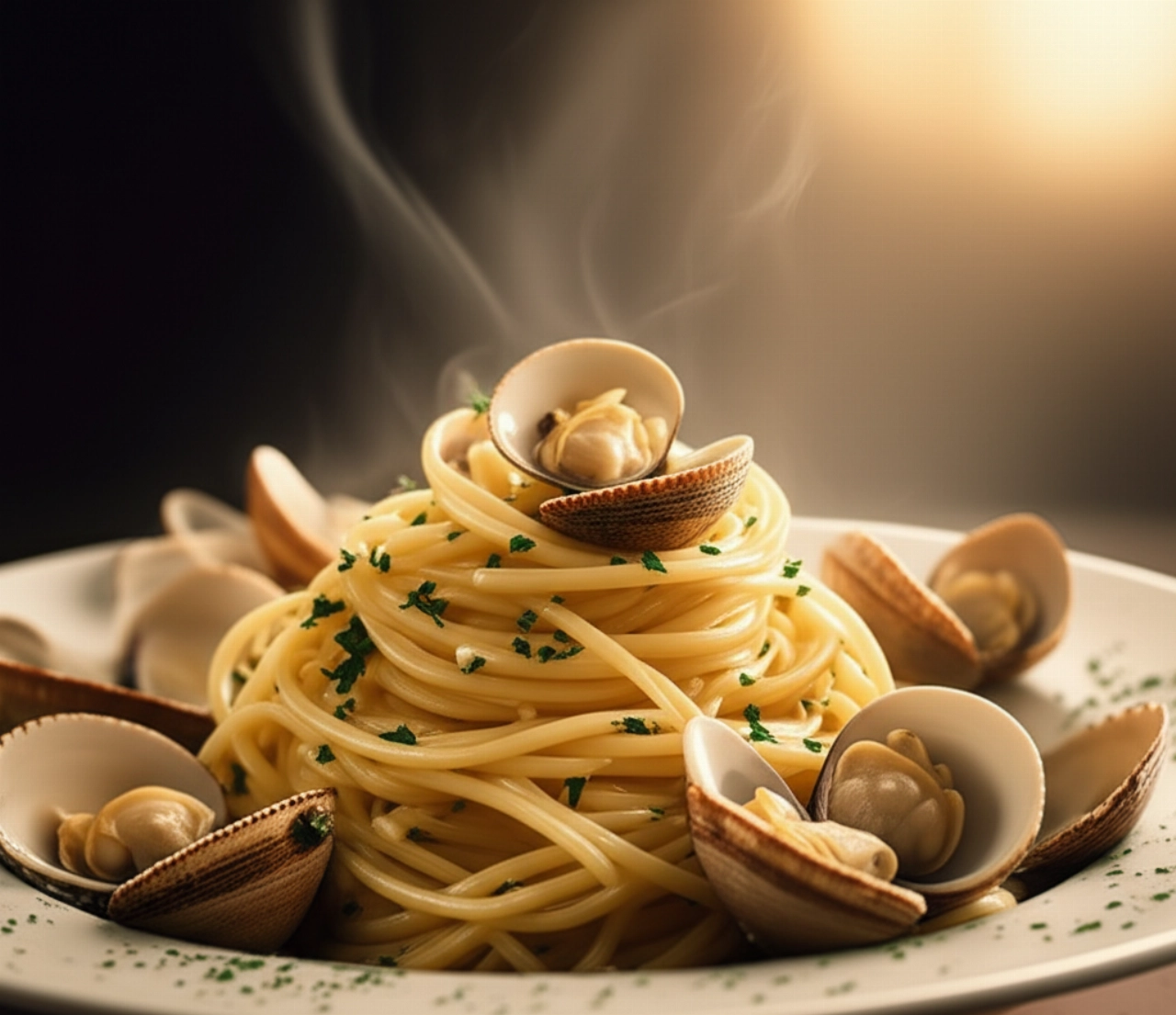
Spaghetti with Clams: The Secret to Pure, Sand-Free Seafood Flavor
The true secret of this dish is not just the quality of the ingredients, but the care and attention in every step. I'll guide you step by step to achieve enveloping spaghetti, with juicy clams and an unmistakable sea aroma, without the nightmare of sand and with pasta always al dente. This is the promise of Search Recipes.

Smart Ingredients for Dream Spaghetti with Clams: The Choice That Makes All the Difference
For such an iconic dish, the quality of the ingredients is fundamental. This is not just a list, but a reasoned selection to guarantee you maximum flavor and safety.
- Clams (Veraci or Lupini): Always choose very fresh clams, with tightly closed shells. Veraci clams are the most prized for their intense flavor and meaty texture. Lupini are smaller but equally flavorful. Avoid pre-cooked or frozen clams if you want the true taste of the sea.
- Spaghetti: Pasta is the base! Choose high-quality Gragnano or durum wheat semolina spaghetti. Their porosity and cooking resilience will make all the difference, absorbing the sauce perfectly.
- Garlic: One clove, two at most. It should perfume, not overpower the clam flavor. I recommend fresh garlic, perhaps new garlic, which is sweeter and less intrusive.
- Extra Virgin Olive Oil: Good EVO oil is essential. It should be fruity but delicate, to enhance flavors without overpowering them. Don't skimp on quality!
- Chili Pepper (optional): A touch, a pinch, for those who love a spicy note that awakens the palate. Don't overdo it; it should be a whisper, not a shout.
- Dry White Wine: A glass of good, not too aromatic, white wine will help the clams open and add a note of complexity to the sauce. Choose a wine you'd gladly drink at the table too.
- Fresh Parsley: Plenty, finely chopped. Added at the end, it brings freshness and color. It's the indispensable finishing touch.
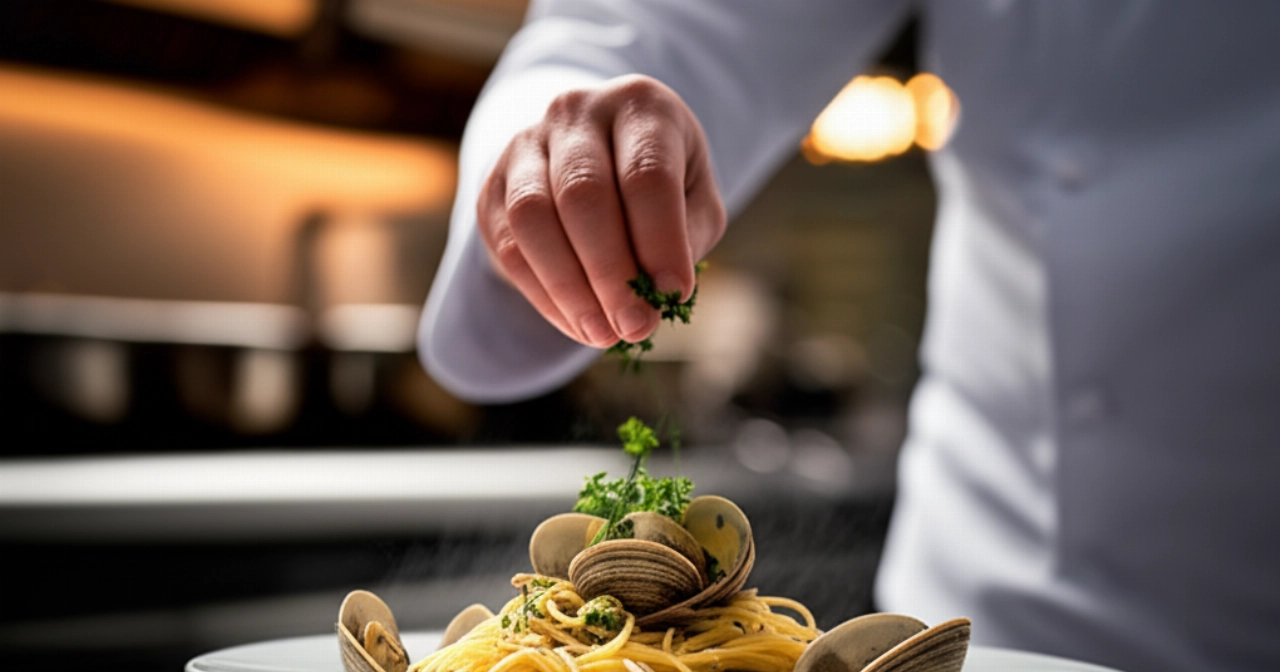
The 3 Mistakes That Ruin Spaghetti with Clams (and How to Avoid Them)
I've seen this masterpiece ruined too many times by small oversights. Don't worry, I'm here to guide you and help you avoid the most common pitfalls.
- Not Purging the Clams Properly: This is the number one mistake that brings sand into your dish. Clams should be submerged in cold salted water for at least 2-3 hours (or even longer, up to half a day), changing the water a couple of times. The salinity should be similar to that of the sea (about 30g of salt per liter of water). This encourages them to expel sand. Never skip this step!
- Overcooking the Clams: As soon as the clams open, they're ready! If you leave them on the heat for too long, they become rubbery and lose their juiciness. Remove them from the heat as soon as they've opened and discard any that remain closed: they are dead or full of sand.
- Draining the Pasta Too Early or Too Late: The pasta must finish cooking in the clam sauce. Drain the spaghetti very al dente (at least 2-3 minutes before the time indicated on the package) and transfer them directly to the pan with the clams. This allows the pasta to absorb all the flavors and release starch, creating a delicious creamy sauce. If you drain it too late, it will be mushy; too early, it will remain raw.
The Extra Touch: My Grandma's Tip for Perfect Clams
My grandma, when she prepared spaghetti with clams, had a little secret to ensure the sauce was always incredibly flavorful and the clams opened perfectly. After purging them, she'd put them in a pan with garlic and a drizzle of oil, cover, and let them open over high heat. But the trick was this: once opened, she'd immediately remove them from the pan with a slotted spoon, filter their cooking liquid through a very fine-mesh sieve (or a clean cloth) to eliminate any sand residue, and only then add it to the sauté to create the sauce base. This way, the clams didn't overcook, and the broth was pure. A small gesture that makes a huge difference!
Let's Prepare Spaghetti with Clams Together: The Step-by-Step Guide
Now that you know all the secrets, it's time to get cooking. Follow me carefully; every step is fundamental for the success of your dish.
- Purge the Clams (the most important step!):
- Place the clams in a large bowl.
- Cover them completely with cold water and add about 30 grams of coarse salt for every liter of water.
- Let them soak for at least 2-3 hours, or even better for half a day, changing the water every hour or two. You'll see the sand settle at the bottom. This step is crucial to eliminate any residue.
- Open the Clams:
- In a large pan (big enough to also hold the pasta), pour a generous drizzle of extra virgin olive oil.
- Add the garlic (whole or lightly crushed, depending on your taste; we'll remove it later) and chili pepper (if using). Sauté gently for a minute, without burning the garlic.
- Add the well-drained clams and a glass of dry white wine.
- Immediately cover with a lid and raise the heat. The clams will open thanks to the steam.
- Shake the pan occasionally. As soon as they've opened (it will take 2-4 minutes), remove the lid.
- Important: With a slotted spoon, remove the opened clams and set them aside in a bowl. Discard any that haven't opened.
- Filter the Clam Liquid:
- The liquid remaining in the pan is pure gold! Filter it through a very fine-mesh sieve, perhaps lined with a clean cotton cloth or kitchen paper, to eliminate any trace of sand. Return the filtered liquid to the pan.
- Cook the Pasta:
- Bring a large pot of salted water to a boil for the spaghetti.
- When the water boils, add the spaghetti and cook them for about half the time indicated on the package (or very al dente).
- Toss and Combine:
- While the pasta cooks, return the pan with the filtered clam liquid to the heat.
- Drain the spaghetti directly into the pan with the sauce, using kitchen tongs. Don't discard the pasta cooking water!
- Add a ladleful of pasta cooking water and begin to toss, sautéing the pasta in the pan. The starch released by the pasta will create a delicious creamy sauce.
- Continue stirring and adding more cooking water if necessary, until the pasta is cooked al dente and well coated with the sauce.
- Add Clams and Serve:
- At this point, add the clams you had set aside.
- Add plenty of fresh chopped parsley.
- Toss the pasta for one last minute, just long enough to heat the clams through.
- Serve immediately, garnished with more fresh parsley. Sopping up the sauce is a must!
Tips and Frequently Asked Questions about Spaghetti with Clams
I know you might still have some doubts, and that's perfectly fine! Here are the answers to the most common questions to ensure guaranteed success.
- Can I use frozen clams? I strongly advise against it if you want the true flavor and perfect texture. Fresh clams make a huge difference. If you truly have no alternative, choose those already shelled and add them only at the last minute to prevent them from becoming rubbery.
- Why don't some clams open? Clams that don't open were either dead before cooking or are full of sand. Never force them open and discard them, for your safety and to avoid ruining the dish.
- Can I prepare the sauce in advance? It's best to prepare the clam sauce just before serving to preserve the freshness of the seafood flavor. You can purge the clams in advance, but the cooking and tossing with the pasta should be done shortly before serving.
- How can I make the sauce creamier? The secret is the final tossing with the pasta cooking water. The starch released by the spaghetti, combined with the clam liquid, will create a natural creamy sauce. A drizzle of raw olive oil at the end can help bind everything together.
- Can I add cherry tomatoes? The traditional Neapolitan recipe calls for the 'in bianco' (white) version, but in some areas, a few Pachino or Datterino cherry tomatoes are added for a touch of color and sweetness. If you use them, add them to the sauté after the garlic and let them soften slightly before adding the clams.
There you have it! Now you don't just have a recipe, but all the secrets to bring to your table a dish that tastes of the sea, tradition, and love. A first course that will win everyone over, from the first to the last bite, and make you feel like a true home chef.
Don't be afraid to experiment. Cooking is a gesture of creativity and generosity. But start with this solid and foolproof base, and you'll see that applause won't be lacking. The aroma that will emanate from your kitchen will be your greatest reward.
Have you tried our Spaghetti with Clams recipe? We're very curious to see your masterpiece! Leave a comment below, tell us how it went, or share a photo on Instagram by tagging @CercaRicette.it. If you loved this seafood pasta, you can't miss our recipe for a perfect second course like Roman-Style Fried Cod or for a light and flavorful side dish like Zucchini alla Scapece.
